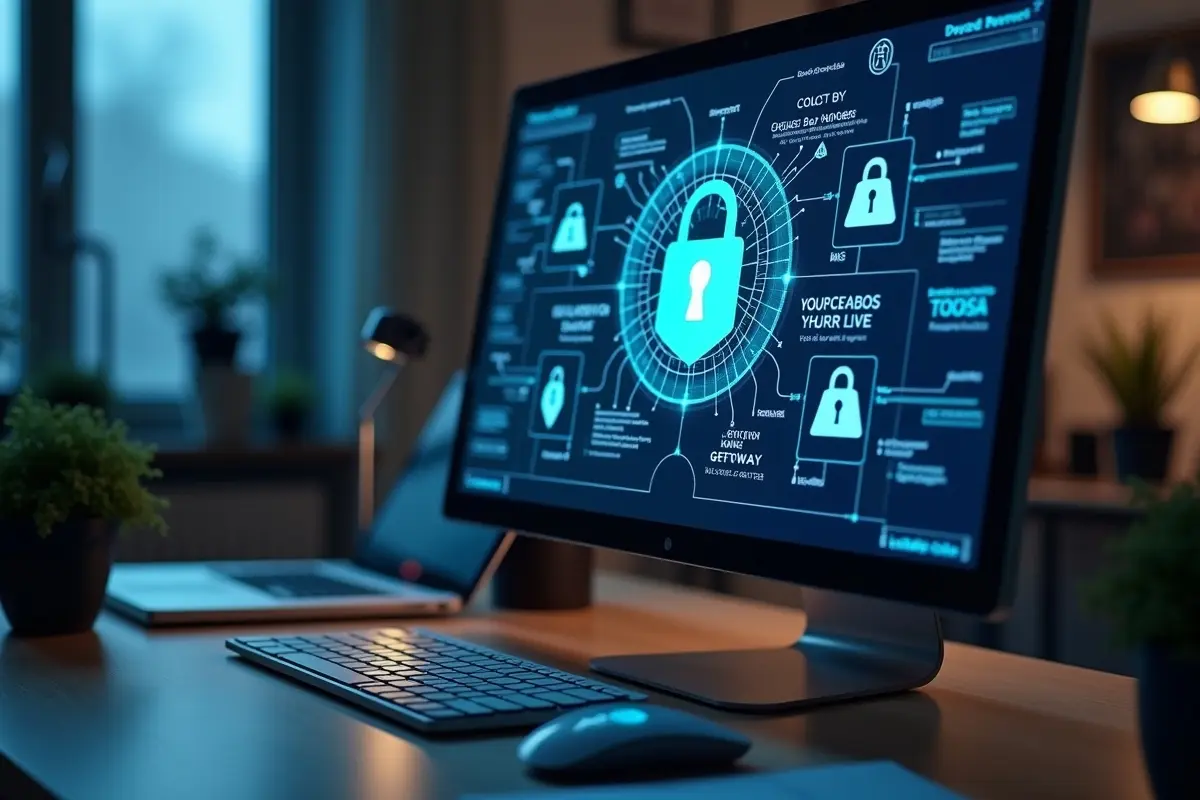As organizations accelerate their digital transformation journey and a growing number of businesses migrate workloads to the cloud, redesigning and modernizing security architectures becomes strategic and necessary for survival. Secure Access Service Edge (SASE) represents a pivotal transformation in networking and security, effectively combining these capabilities into a unified, cloud-native platform.
For business leaders and IT decision makers navigating today’s complex environment, understanding what is SASE? and keeping up to date with its latest advancements is essential. SASE is much more than a set of tools — it is a new paradigm, redefining how organizations achieve secure, efficient, and adaptive access to resources around the globe.
The evolving business environment—with its globalized, distributed workforce, widespread proliferation of mobile devices and endpoints, and an increasingly sophisticated and expanding cyber threat landscape—has prompted enterprises to rethink traditional notions of security completely. The historic “castle and moat” model is no longer feasible as data, users, and resources are spread across cloud, branch, and remote locations.
SASE’s integrated approach breaks down these boundaries by facilitating efficient, scalable protection for all users and devices wherever they are located. This means security teams no longer have to wrestle with disjointed legacy solutions that don’t scale or integrate well. As a result, forward-thinking organizations are embracing SASE not merely for technology’s sake, but to enable secure, seamless digital experiences that foster productivity and trust for their teams and customers.
This article examines the most prominent trends influencing SASE adoption and deployment across global enterprises. By staying informed about these vital changes, organizations can strengthen their security posture, drive operational agility, and meet compliance expectations with greater confidence and less overhead. For IT and security leaders, harnessing the latest SASE trends isn’t just a matter of keeping up—it’s about gaining a competitive edge in an increasingly digital marketplace.
In addition to consolidating security and networking, SASE frameworks are designed to address emerging demands for privacy, real-time responsiveness, operational transparency, and deep visibility—qualities that set the stage for a new era of truly cyber-resilient enterprises. As explored by reports from major analysts such as Gartner, SASE is quickly becoming a core pillar of modern enterprise IT infrastructure. The right SASE solution has the power to break down silos, innovate at speed, and support ambitious growth while maintaining rigorous security standards.
Rise of Single-Vendor SASE Solutions
To reduce complexity and streamline operations, enterprises increasingly gravitate toward single-vendor SASE platforms offering tightly integrated networking and security solutions. This strategic move toward platform convergence is driven by several essential advantages: simplified deployment processes, intuitive centralized policy management, and a uniform, optimized user experience across every company location and device type.
Business and technical leaders appreciate that a single-vendor SASE approach significantly minimizes the risk of misconfigurations, security gaps, and compatibility headaches that often come with assembling multiple disparate products from different vendors.
Organizations can focus more time and energy on strategic innovation with a holistic solution from a trusted provider rather than simply keeping the lights on. They benefit from improved operational efficiency, quicker troubleshooting, and a more agile response to emerging threats—crucial factors in today’s dynamic enterprise environment.
Integration of Zero Trust Network Access (ZTNA)
Zero Trust Network Access (ZTNA) has emerged as the cornerstone of next-generation SASE architectures. Unlike perimeter-based legacy solutions that implicitly trust anything inside the network, ZTNA challenges every access request by continuously authenticating and authorizing users and devices. It evaluates contextual factors such as user identity, device health, location, and application sensitivity before granting access.
This comprehensive, granular approach is critical to securing today’s widely distributed and remote-friendly architectures, where employees may need corporate resources from anywhere, including insecure or public networks.
Modern SASE providers embed ZTNA principles at their core, allowing enterprises to implement least-privilege access automatically and dynamically adapt policies to business needs. By curbing lateral movement and reducing risk exposure, ZTNA enables enterprises to operate securely in hybrid IT and multi-cloud environments, all while delivering a seamless experience to end users.
AI and Machine Learning Enhancements
Artificial Intelligence (AI) and Machine Learning (ML) are rapidly becoming essential components of the SASE security stack, allowing organizations to transition from reactive to truly proactive threat detection and response.
With enormous network and security data to analyze, AI/ML-driven analytics give enterprises a massive efficiency advantage in detecting abnormal behavior, recognizing zero-day attacks, and orchestrating fast, automated responses to increasingly sophisticated cyber threats that would otherwise go undetected. These self-learning technologies process billions of events in real time, intelligently correlating suspicious activities and dramatically improving incident response times.
In practice, AI/ML helps organizations focus security resources on genuine high-risk threats, minimizing noise and false positives. As attackers evolve, these adaptive technologies ensure that modern security measures are always one step ahead, supporting continuous risk assessment and system hardening. For a deeper dive into how AI is transforming cybersecurity, resources from CSO Online provide extensive insights into practical applications and future-forward use cases.
Securing IoT and Edge Devices
As more companies embrace digital transformation, the rapid proliferation of Internet of Things (IoT) devices and edge computing presents new and complex vulnerabilities. IoT endpoints—from sensors and cameras to industrial controllers—often lack robust firmware or are left unpatched, making them easy targets for attackers.
SASE directly addresses these challenges by offering comprehensive visibility, continuous monitoring, and innovative security controls tailored to traditional and non-traditional endpoints. Through intelligent network segmentation, context-aware access controls, and 24/7 behavioral analytics, SASE frameworks can prevent both internal and external lateral movement of threats.
By automatically profiling devices and applying the right security policies, organizations can confidently leverage the massive benefits of IoT and edge analytics—such as real-time automation, improved logistics, and smarter operations—without compromising on security or exposing business-critical assets to unnecessary risk.
Regulatory Compliance and SASE
Today’s compliance landscape is continually evolving, with increasingly stringent data protection, privacy, and cybersecurity regulations spanning GDPR in Europe, CCPA in California, HIPAA for healthcare, and many others for financial and government sectors. Achieving and maintaining compliance with this web of requirements presents a significant challenge for global enterprises, especially those operating across multiple jurisdictions.
SASE solutions are designed to simplify and automate key compliance processes by providing centralized governance tools for audit logging, policy enforcement, real-time monitoring, and data loss prevention. These integrated features streamline mandatory reporting, minimize manual effort, and reduce the administrative burden on IT and compliance teams.
With SASE, organizations maintain consistent, up-to-date security policy enforcement across all users and data—regardless of where they reside—enabling confident, scalable operations in even the most highly regulated industries.
Market Growth and Adoption Statistics
The overwhelming demand for scalable yet integrated network-security solutions continues to propel SASE market growth at an impressive pace. Multiple industry analyses now predict that the global SASE market will reach $7.0 billion by 2030, achieving a compound annual growth rate (CAGR) of roughly 21.0% from 2023 through 2030.
Key drivers behind this acceleration include the massive adoption of cloud services, the shift to remote and hybrid work as a standard business model, the ongoing expansion in digital supply chains, and a rapidly changing threat environment.
As independent analysts at IDC highlight, enterprises of all sizes—from small businesses to global conglomerates—recognize SASE as a foundational investment for long-term secure digital transformation. By future-proofing their infrastructure with a SASE solution, organizations set themselves up for greater resilience, flexibility, and innovation in the years ahead.
Conclusion
SASE fundamentally redefines how enterprises approach security and networking in a hyper-connected, cloud-first world. Thanks to advances in single-vendor platform integration, Zero Trust models, AI/ML-driven automation, IoT and edge device security, and regulatory compliance tools, SASE now empowers organizations to confidently future-proof their IT environments.
Enterprises that proactively adapt to these trends and integrate them into business strategy strengthen their cyber defenses and create the agility and trust needed to accelerate ongoing digital innovation and growth. Remaining ahead in the SASE evolution positions businesses to thrive amid uncertainty and ensures long-term value for stakeholders.




